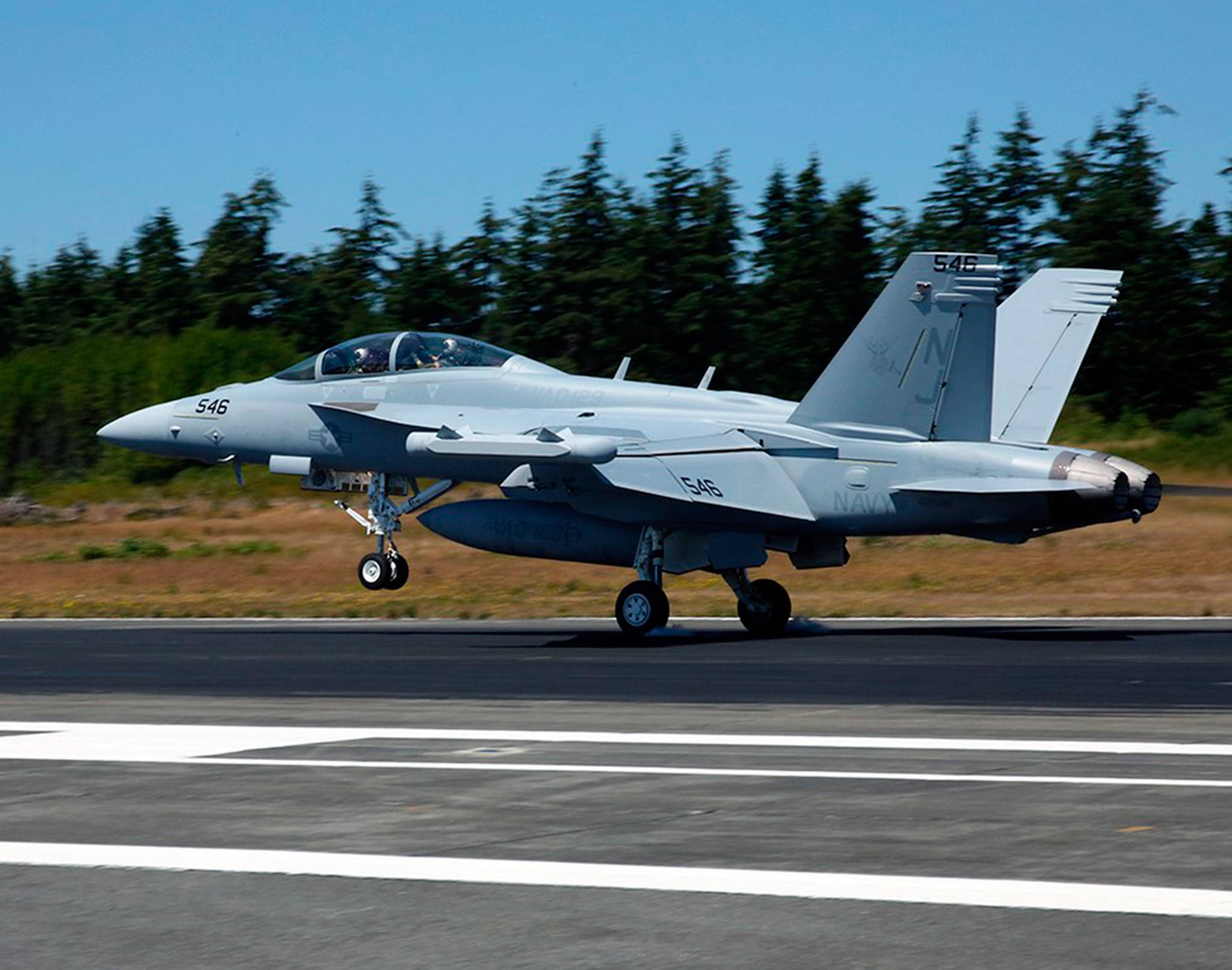The U.S. Navy plans to increase jets at their Whidbey Island Naval station. How this affects San Juan islanders is still up in the air.
The good news is that the majority of low-flying jet practices would be moved from the northern end of the Whidbey Island to about 10 miles south, which is farther from San Juan County.
The bad news is, an increase in practices would take off and land at the northern end of Whidbey — closest to San Juan County — and 36 more jets, known as Growlers, would be added to the station, overall, totaling 118.
“If … the 36 more Growlers are active, there will be more noise everywhere,” said Cynthia Dilling, a member of Quiet Skies Over San Juan County. “[However] if the preferred plan is accepted, there is a chance San Juan County could get slightly fewer [low-flying practices], which could make a difference.”
The group Quiet Skies Over San Juan County has been fighting against the noise that Growlers make, specifically during those low-flying drills known as Field Carrier Landing Practices or FCLPs, since about 2012.
On June 25, the Navy released their preference for a plan which calls to reduce low-flying aircraft practices at the station’s base of Ault Field, in the north, by almost 10,000 annual takeoffs and landings, while nearly quadrupling the drills at the Coupeville airfield about 10 miles south. That means 80 percent of the station’s FCLPs would be performed at Ault Field and 20 percent in Coupeville.
The Navy’s preferred plan is not a final decision, but one option included in a draft environmental impact statement, or EIS, that analyzes how an increase in Growlers would affect nearby communities and Naval operations.
In addition to moving the practices, the favored plan also calls for air traffic to include roughly 88,000 annual takeoffs and landings at Ault Field. Those 88,000 operations include the FCLPs, other Growler missions and operations involving other aircraft, like helicopters.
“Even though we might have fewer FCLPs, we may hear more aircraft [at Ault Field]; 100 percent of the Growlers will be taking off from Ault and then returning to Ault,” said Dilling. “It’s hard to understand what the noise reduction might be.”
Dilling said the Navy does not deem the low-frequency sounds emitted by the Growlers as a health concern, while she and other Quiet Skies Over San Juan County members disagree and have noted such in their comments on the EIS.
The draft EIS states, “No studies have shown a definitive causal and significant relationship between aircraft noise and health.” However, Dilling referenced a 1999 World Health Organization study that states “a large proportion of low-frequency components in a noise may increase considerably adverse effects on health.”
Dilling has lived on the southeastern tip of Lopez Island since 1979.
She said that FCLPs can occur at any time and day, except from 2-7 a.m., and sometimes lasts up to seven hours. She said she has recorded Growler noise up to 104 decibels in her kitchen, which, according to the Washington Department of Ecology, is about as loud as a lawnmower.
That sound, according to Dilling, is even louder on Whidbey.
“My concern is that 80 percent of FCLP occurring at Coupeville will devastate Whidbey,” she said, referring to data in the preferred plan. “We’re looking at this as a regional issue.”
Currently, 6,120 FCLP takeoffs and landings occur at the Coupeville airfield annually, as opposed to the 23,700 proposed in the plan. At Ault Field, 5,900 FCLPs would be performed under the plan, as opposed to the 15,880 performed last year.
The practices mimic landings on aircraft carriers at sea, in what Navy Media Relations Officer Ted Brown called “a touch-and-go pattern.”
In the practices, pilots take off from Ault Field, travel about 10 miles south to the Coupeville airfield, enter closed-loop, race-track pattern in the air, then descend and completely, or just barely, touch the Growlers wheels to the strip. They continue until the required passes are completed and return to Ault Field.
The Whidbey Island airstrip “more closely replicates an aircraft carrier” than Ault Field, added Brown, because the airfield sits on a 200-foot ridge with a flat terrain, similar to an aircraft carrier. The airfield can also be completely darkened, as most aircraft carrier landings occur at night, he said.
Brown said pilots have to do a required amount of these practices, based on their skill level, to be deployed to aircraft carriers throughout the county, like in California and Virginia.
According to Brown, the increase in Growlers on Whidbey is due to the elimination of Growler-specific missions by other U.S. military departments. Brown said Naval Air Station Whidbey is the only U.S. location for Growlers, which are used in “electronic attack missions.”
U.S. Rep. Rick Larsen publicized a letter he sent to U.S. Navy Secretary Richard Spencer about three days after the release of the Navy’s preferred plan. Larsen questioned why “other scenarios with less extreme distribution [of FCLPs were] rejected,” as well as if the Navy will fund a testing hangar called a “hush house,” which muffles jet noise.
The Navy plans to release their final EIS in late summer, said Brown, and Secretary Spencer will make a final decision no sooner than 30 days after that. Brown said the Navy has received roughly 4,300 public comments on the draft EIS, but public comment will not be open after the final EIS is published.




